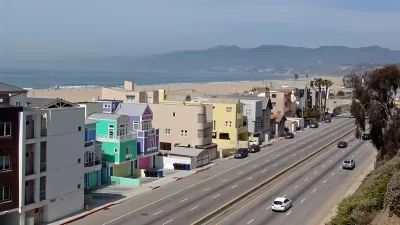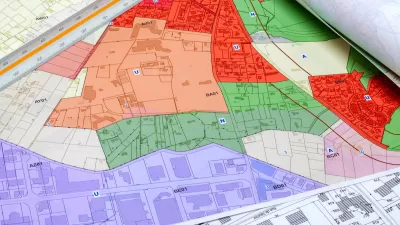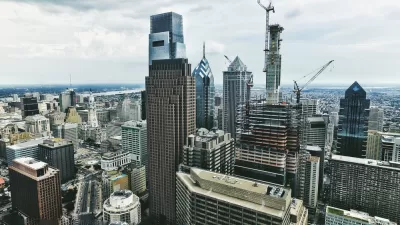Many local leaders spoke strongly against President Trump's decision to withdraw the United States from the Paris Climate Accords, but local land use and transportation policies still sorely lack any consideration of climate impact.

Juan Matute writes of the example set by the liberal enclave of Santa Monica, California in the effort to limit carbon emissions. Matute's verdict: that the city of Santa Monica, like the United States, is backing off commitments to address climate change.
First, Matute notes Santa Monica's tradition of environmental planning, and its ostensible commitment to the cause of limiting carbon emissions:
Santa Monica has a long-standing Sustainable City Plan and a Sustainability Bill of Rights (which enumerates a resident’s right to a sustainable climate). It would seem that a city like Santa Monica would make every effort to consider the impacts of its major decisions on our planet’s future climate.
But the city has recently released a new downtown plan "that ignores its impact on climate change," writes Matute. Instead of planning for new growth around the city's transit lines, Matute says the plan makes a few token mentions of the city's carbon footprint, and a few sentences devoted to the California's SB 32, passed last year, which mandates a 40 percent reduction in statewide GHG emissions.
Matute recommends the use of the Integrated Transportation and Land Use Consequential Life-Cycle Assessment method to model emissions resulting from planning decisions. It will be up to planning agencies at the local level to decide to consider and address those kinds of models. To be fair—Santa Monica is not the only liberal-leaning city that hasn't.
FULL STORY: An Inconvenient Truth: Climate Change Takes A Backseat to Slow Growth in Santa Monica’s Downtown Plan

Alabama: Trump Terminates Settlements for Black Communities Harmed By Raw Sewage
Trump deemed the landmark civil rights agreement “illegal DEI and environmental justice policy.”

Planetizen Federal Action Tracker
A weekly monitor of how Trump’s orders and actions are impacting planners and planning in America.

The 120 Year Old Tiny Home Villages That Sheltered San Francisco’s Earthquake Refugees
More than a century ago, San Francisco mobilized to house thousands of residents displaced by the 1906 earthquake. Could their strategy offer a model for the present?

In Both Crashes and Crime, Public Transportation is Far Safer than Driving
Contrary to popular assumptions, public transportation has far lower crash and crime rates than automobile travel. For safer communities, improve and encourage transit travel.

Report: Zoning Reforms Should Complement Nashville’s Ambitious Transit Plan
Without reform, restrictive zoning codes will limit the impact of the city’s planned transit expansion and could exclude some of the residents who depend on transit the most.

Judge Orders Release of Frozen IRA, IIJA Funding
The decision is a victory for environmental groups who charged that freezing funds for critical infrastructure and disaster response programs caused “real and irreparable harm” to communities.
Urban Design for Planners 1: Software Tools
This six-course series explores essential urban design concepts using open source software and equips planners with the tools they need to participate fully in the urban design process.
Planning for Universal Design
Learn the tools for implementing Universal Design in planning regulations.
Clanton & Associates, Inc.
Jessamine County Fiscal Court
Institute for Housing and Urban Development Studies (IHS)
City of Grandview
Harvard GSD Executive Education
Toledo-Lucas County Plan Commissions
Salt Lake City
NYU Wagner Graduate School of Public Service





























